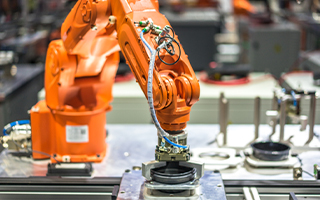An ecosystem approach to local government digital services

Local government technology has the potential to directly improve the lives of citizens. However, too often, progress is hampered by a limited view of public service digitization that focuses on delivering one-off projects or automating basic transactions. Understanding the corporate structure of a council in order to get the required/desired services or support should not be the case. Councils can easily improve the efficiency, effectiveness, and transparency of their citizen services by taking a more holistic and connected approach along with utilizing data, digital, and user-centric design approaches.
Many of the newer technologies are yet to reach critical mass as local government adoption of this ecosystem of tools and approaches is still in its early stages, but they have the potential to transform the industry. Some of the current key technology interventions include:
Chatbots and AI
The use of machine learning and automated chatbots to handle common customer service queries offers significant potential cost savings, freeing up staff time to handle more complex queries.
Live chat
Another option being considered by the local government to improve accessibility is interactive online chat. According to research conducted for the Scottish Government, planning authorities are interested in using chat services to improve perceived customer service.
Voice-enabled services
For the past few years, the emphasis has been on delivering mobile-first design, but voice search is expected to become mainstream within the next five years. In the United Kingdom, one in every ten households already has a smart speaker. Local governments must consider how to support and optimize their services.
Personalization
People can manage personalized budgets in health and social care using digital apps.
Mapping and tracking
Effective asset management allows public sector organizations to make better use of their existing assets while identifying areas that require investments.
Virtual/augmented reality
AR and VR technologies are not only being used as a consultation and engagement tool for major development projects but also as training tools within health care. It was also used in Northern Ireland in 2019 to instruct people with learning disabilities on how to vote. If the required efficiencies are achieved from digital citizen services, then they need to be able to scale. A key part of that is interoperability which means making it as easy as possible for customers to access citizen self-service services, and for citizen service providers to verify key information in a secure way.
Councils recognize the importance of assisting with direct service delivery and shaping a better citizen experience. People, however, always have higher expectations for digital citizen services based on their previous experiences with retail-based B2C (business-to-consumer) online services. The challenge for local governments, on the other hand, is to provide the seamless experience that consumers expect. Many local governments still have disparate legacy systems and technologies, and disjointed workflows that lead to high administrative costs and lower customer satisfaction. Conducting user research as early as possible can be one of the solutions for local governments as design thinking is quickly becoming a required skill in the public sector.
Although many councils now have adequate digital channels, these services haven’t adequately transformed back-office processes. Despite some well-implemented user journeys and interface designs, most services still take considerable time and effort to operate. They’re dependent on manual interventions, handovers, and many time-consuming interactions across different channels, including face-to-face and over the phone call.
Patterns should be defined around how services work
One of the biggest challenges faced by local governments is the way it operates services. For a service pattern to be useful it has to be in a way of documenting or sharing a common user experience or user journey, and, most importantly, a supporting business process.
A pattern at a service level such as ‘applying for a license’, or ‘paying a parking fine’, must also help shape the design of the organization operating the service. This means capturing the best practices or potential uses of technology and automation applied to how a service works across all interactions, not just on screen.
When this doesn’t happen, patterns fail to go beyond good practice for content and interaction design which means that they typically only document screen-based or ‘online’ activities.
The real opportunity lies with applying pattern thinking to the internal mechanics of how organizations work to become more digital.
Microland’s design thinking: Moving beyond better forms
The answer is never a better form unless you’re asking the wrong questions. At Microland, when we’re designing forms and digital transactions, we consider usability and accessibility as the core component and crucial for users. But this can often hide the fact that many interactions with government are unnecessary and only exist because we don’t have ways to share data or help people connect together with the different services that they need (often with a unique set of circumstances only applicable to their individual situation).
Helping local government solve operational problems is the best way to work towards significantly improving these services for users. This doesn’t just mean simpler, clearer, and faster transactions with government, but should eventually mean that redundant services become completely invisible to users.
Working together
The simplicity of a documented service pattern is attractive but it doesn’t address the complexity introduced by what really happens in the lives of the individuals interacting with government.
To address this, co-design and closer working between different councils and local authorities is the way forward. In the latest blog post by the GOV.UK, they confirm local design team setting out co-designing and researching the same types of services, potentially even building them at the same time, making it possible to achieve far more together than people can individually.
Facilitation across similar types of services is a great opportunity for local government, and co-design is a proven approach that many agencies, including FutureGov, have used to make this work. Co-design should also mean work happening across organizations and different levels of government (when appropriate). This is the focus of projects we’re supporting such as setting up a London office of Technology and Innovation.
We also believe that not losing sight of context across all services is just as important. Testing and iterating solutions based on real service delivery in different places also make a lot of difference. For example, although they might have much in common, the challenges for housing in the London borough of Hackney and for rural district councils are very different when exposed to the realities of user needs in the local communities.
It’s all about having a good service design
Instead of focusing on service patterns we believe that it might be better to start by focusing on patterns for good service design for local government.
To put things into perspective, below are some of the approach Microland takes to build a good service design:
Focusing on fixing services, not websites
This means prioritizing service outcomes which means focusing first and foremost on people. It’s about designing how organizations operate to make sure services work for everyone, including providing flexibility and choice whenever and wherever it’s needed (not just screen-based transactions). We believe that it should be possible to share solutions built on digital working practices that become alternative patterns to better web forms.
Working together and beyond boundaries
This means working across organizations at all levels of government and in the 3rd sector — encouraging people to work beyond their own organizational boundaries. We believe that more local government services in the future will be the result of co-design (and research) and also shared operational platforms built around emerging digital business models.
Documenting and sharing
This means helping local government find effective ways to share work on services, with the potential for reuse. We believe that the GDS service pattern examples are useful (especially the publishing format), and we intend to reuse or find ways to contribute patterns for services that we’ve already created.


















